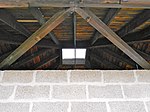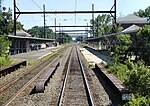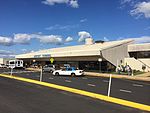Ewing Township, New Jersey
1834 establishments in New JerseyEwing Township, New JerseyFaulkner Act (mayor–council)New Jersey populated places on the Delaware RiverPopulated places established in 1834 ... and 3 more
Townships in Mercer County, New JerseyUse American English from March 2020Use mdy dates from March 2020

Ewing Township is a township in Mercer County, in the U.S. state of New Jersey. The township falls within the New York metropolitan area as defined by the U.S. Census Bureau. It borders the Philadelphia metropolitan area and is part of the Federal Communications Commission's Philadelphia Designated Market Area. As of the 2020 United States census, the township's population was 37,264, its highest decennial count ever and an increase of 1,474 (+4.1%) from the 35,790 recorded at the 2010 census, which in turn reflected an increase of 83 (+0.2%) from the 35,707 counted in the 2000 census.
Excerpt from the Wikipedia article Ewing Township, New Jersey (License: CC BY-SA 3.0, Authors, Images).Ewing Township, New Jersey
Dixmont Avenue,
Geographical coordinates (GPS) Address Nearby Places Show on map
Geographical coordinates (GPS)
| Latitude | Longitude |
|---|---|
| N 40.263344 ° | E -74.798704 ° |
Address
Dixmont Avenue 27
08618
New Jersey, United States
Open on Google Maps




